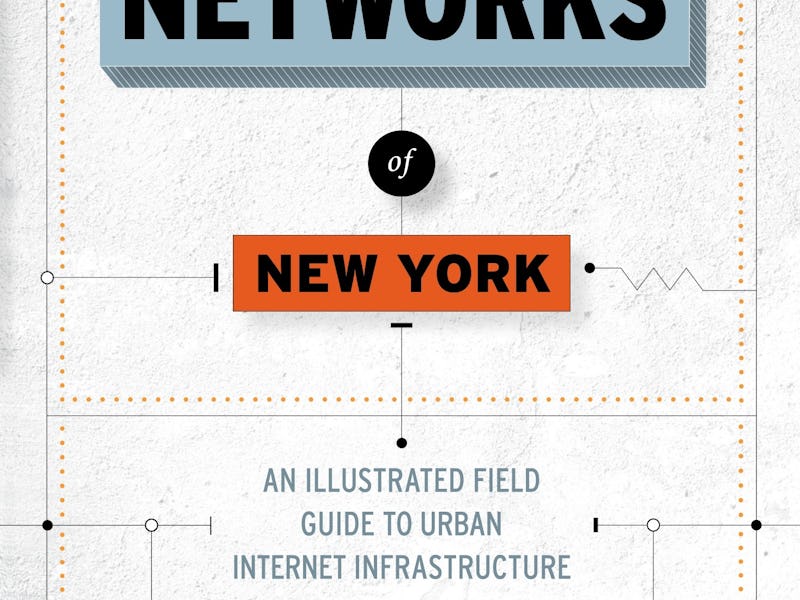Want to See the Physical Internet? Here's Where to Look
It's like a birdwatcher's guide but for IT.

Rome wasn’t built in a day and neither was the technological infrastructure of New York. In fact, the physical history of the city’s networks can be seen around us every day. That’s what inspired artist and writer Ingrid Burrington to write her recently published book Networks of New York.
“I think there are a lot of things about the internet and network technology that are experienced in a very abstract way, like through not superficial but tertiary layers,” Burrington tells Inverse. “A lot of things go on the other side of that screen that just gets abstracted away from most users. What that leads to is a tendency to, when looking for visual technology or the internet is to lean toward really abstract images.”
However, a curiosity to know what exactly the internet looked like on a physical basis drove Burrington to research the matter.
“I remember thinking, ‘I don’t really know what this looks like, but I don’t think it looks like this,” Burrington says of the imagery she saw plastered over the television during news about Edward Snowden.
Her book is rich with images and illustrations of everything from manhole covers to police surveillance cameras, and it maps out a world of technology hidden in plain sight for most citizens. Because so many key parts of the internet, like data centers, and server rooms, aren’t accessible to the public, Burrington focused on elements that are.
Burrington says one of the biggest misconceptions about technological infrastructure is over where data is stored for platforms like Facebook or Gmail.
“What is often misconstrued as an immaterial ephemeral environment has to live somewhere and it has to traffic through physical space to actually get from your black mirror to someone else’s black mirror,” says Burrington.
That isn’t to say infrastructure doesn’t have ideological consequences. The effects of how space is used can be just as important as the technology itself.
Surveillance systems, like these subway cameras Burrington sketched for her book, are the most visible of New York's technological infrastructure.
When communications companies began to consolidate into a few main players by the early 2000s, a large amount of “dark fiber” was left unused and ultimately leased by governments and banks. In her book, Burrington talks about how this kind of use leads to the scarcity seen in the case of Verizon Fios in Brooklyn.
“It’s also a weird real estate game, like the anecdote I tend to tell people about this was the guy working in an open manhole who basically told me, I work for Verizon and if I take cables out, Time Warner can put cables in, and Verizon doesn’t really like that,” says Burrington. “So there’s also negotiation of that space in terms of the infrastructure that’s already there.”
There are other parts of New York’s infrastructure that are less clear, but remain a part of the city’s history. In some ways, the infrastructure of the city remains a more tangled history than many architectural sites that have come and gone over the decades.
Ingrid Burrington wanted to illustrate the wiring that connects New York City.
“One thing about the infrastructure just being there that can pose a challenge is there’s a lot of stuff that’s left in the dust of New York City,” says Burrington. “So it’s some stuff where there’s apprehension about taking stuff out of the network, even if it’s copper that possibly hasn’t been used in decades.”